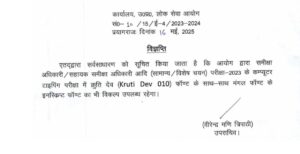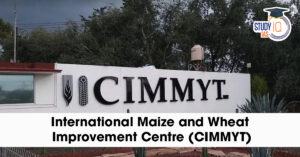Table of Contents
Shivaram Rajguru Biography
Shivaram Hari Rajguru was a prominent Indian freedom fighter and revolutionary who played a crucial role in the Indian independence movement against British colonial rule. He was born on August 24, 1908, in a village called Khed near Pune, Maharashtra. Shivaram Rajguru is best known for his participation in the historic incident of Bhagat Singh and Batukeshwar Dutt throwing non-lethal bombs in the Central Legislative Assembly in Delhi on April 8, 1929, as a protest against repressive laws.
Shivaram Hari Rajguru’s Birth Anniversary
August 24th commemorates the birth anniversary of Shivaram Hari Rajguru. Freedom fighter Rajguru, alongside Sukhdev and Bhagat Singh, faced the gallows on March 23, 1931, at the hands of the British government. Rajguru was born to Parvati Devi and Harinarain Rajguru on 24 August 1908 in the village of Khed, Maharashtra.
Early Life and Education of Shivaram Rajguru
Shivaram Hari Rajguru was born into a middle-class family. His father expired when he was only six years old and the responsibility of family fell on his elder brother Dinkar. He received his primary education in his village and later moved to Pune for further studies. Despite facing financial challenges, he was a bright student and excelled in academics.
As he matured, the ideology of Lokmanya Tilak became a profound source of inspiration for Rajguru. He enlisted in the ‘Seva Dal,’ actively participating in training sessions held at Ghatprabha. Subsequently, he went on to join the Hindustan Socialist Republican Army, dedicating himself to the cause of Indian independence.
Freedom Fighter Rajguru
Shivaram Rajguru grew up witnessing the injustice and exploitation the British Raj continually wrought upon India. In his late teens, Rajguru became a member of the Hindustan Socialist Republican Association (HSRA), an organization founded in 1928 by prominent figures like Chandrasekhar Azad and Bhagat Singh. Rajguru held steadfast to the belief in militant nationalism, advocating that oppression should be met with unyielding ferocity and violence. He did not share Mahatma Gandhi‘s faith in non-violent Satyagraha.
An incident illustrating his unwavering determination was when he deliberately touched a hot iron with his bare hands. When Chandrasekhar Azad questioned the sanity of such an act, Rajguru explained that he was testing his resilience in preparation for potential police brutality.
Within the HSRA, Rajguru earned the moniker ‘Gunman’ due to his exceptional shooting skills, operating under the alias Raghunath. However, his most notable and enduring legacy was his role in the assassination of British police officer J.P. Saunders. This act was meticulously planned by Bhagat Singh, Chandrasekhar Azad, Sukhdev, and Rajguru, with Rajguru and Bhagat Singh firing the fatal shots.
Their motivation stemmed from a desire for revenge following the death of Lala Lajpat Rai, who was believed to have succumbed to injuries sustained during a brutal police lathi charge while protesting against the Simon Commission. Their original target was James A. Scott, the police officer responsible for ordering the lathi charge. However, in a case of mistaken identity, Saunders was killed. Nevertheless, the revolutionaries declared that they had avenged Lala Lajpat Rai’s death.
Following the assassination, Rajguru fled to Nagpur in an attempt to evade the police. Unfortunately, while travelling to Pune, he was apprehended and subsequently arrested.
Shivaram Rajguru and Assembly Bombing
One of the most notable events in Rajguru’s life was his involvement in the bombing of the Central Legislative Assembly in Delhi along with Bhagat Singh and Batukeshwar Dutt. The intention behind this action was not to cause casualties but to draw attention to the repressive nature of colonial laws. The revolutionaries wanted to use the trial that would follow to promote their cause.
Bhagat Singh, Rajguru, Sukhdev: Arrest, Trial, and Execution
In 1929, Rajguru, together with Bhagat Singh and Sukhdev Thapar, faced arrest in connection with the Lahore conspiracy case. They were subsequently put on trial and ultimately sentenced to death for their participation in the assassination of J. P. Saunders. On the fateful day of March 23, 1931, Rajguru met his end through execution by hanging in Lahore jail, alongside Bhagat Singh and Sukhdev Thapar.
Shivaram Rajguru Awards and Honors
While Rajguru did not receive any official awards or honours during his lifetime, his stature in history transcends such recognition. He is widely celebrated as one of the foremost martyrs of the Indian independence movement and a true hero in the hearts of the Indian people.
Rajguru’s birthplace has been rechristened as Rajgurunagar, an enduring tribute to his legacy. Additionally, his ancestral home now bears the name Rajguru Wada. Each year, the Hutatma Rajguru Samarak Samiti (HRSS) unfurls the national flag at Rajguru Wada on Republic Day, marking a solemn and patriotic tradition that honors his memory and the sacrifices he made for India’s freedom.
Bhagat Singh Rajguru, Sukhdev Shaheed Diwas
Every year on March 23, India observes ‘Shaheed Diwas’ or Martyrs’ Day to commemorate the anniversary of the martyrdom of three iconic freedom fighters – Bhagat Singh, Shivaram Hari Rajguru, and Sukhdev Thapar. It was on this date in 1931 that the British government executed these brave souls by hanging them in Lahore’s Central Jail.
Shivaram Hari Rajguru’s legacy
Shivaram Hari Rajguru’s legacy is an indelible mark on India’s struggle for independence. His martyrdom remains a poignant symbol of patriotism and selfless devotion to the nation, inspiring generations of Indians in their quest for freedom and justice. His fearless acts, such as testing his resilience by touching a hot iron, serve as a testament to his unwavering commitment.
Shivaram Hari Rajguru’s legacy is also preserved through educational institutions, memorials, cultural representations, and his enduring influence on activists advocating for social and political change, both in India and around the world. In essence, Shivaram Hari Rajguru’s life and sacrifices continue to inspire and guide those who seek a more just and free society.


 UPPSC RO ARO Exam Date 2025 Out: Typing ...
UPPSC RO ARO Exam Date 2025 Out: Typing ...
 Maharashtra Bill to Curb Urban Naxalism,...
Maharashtra Bill to Curb Urban Naxalism,...
 International Maize and Wheat Improvemen...
International Maize and Wheat Improvemen...





















